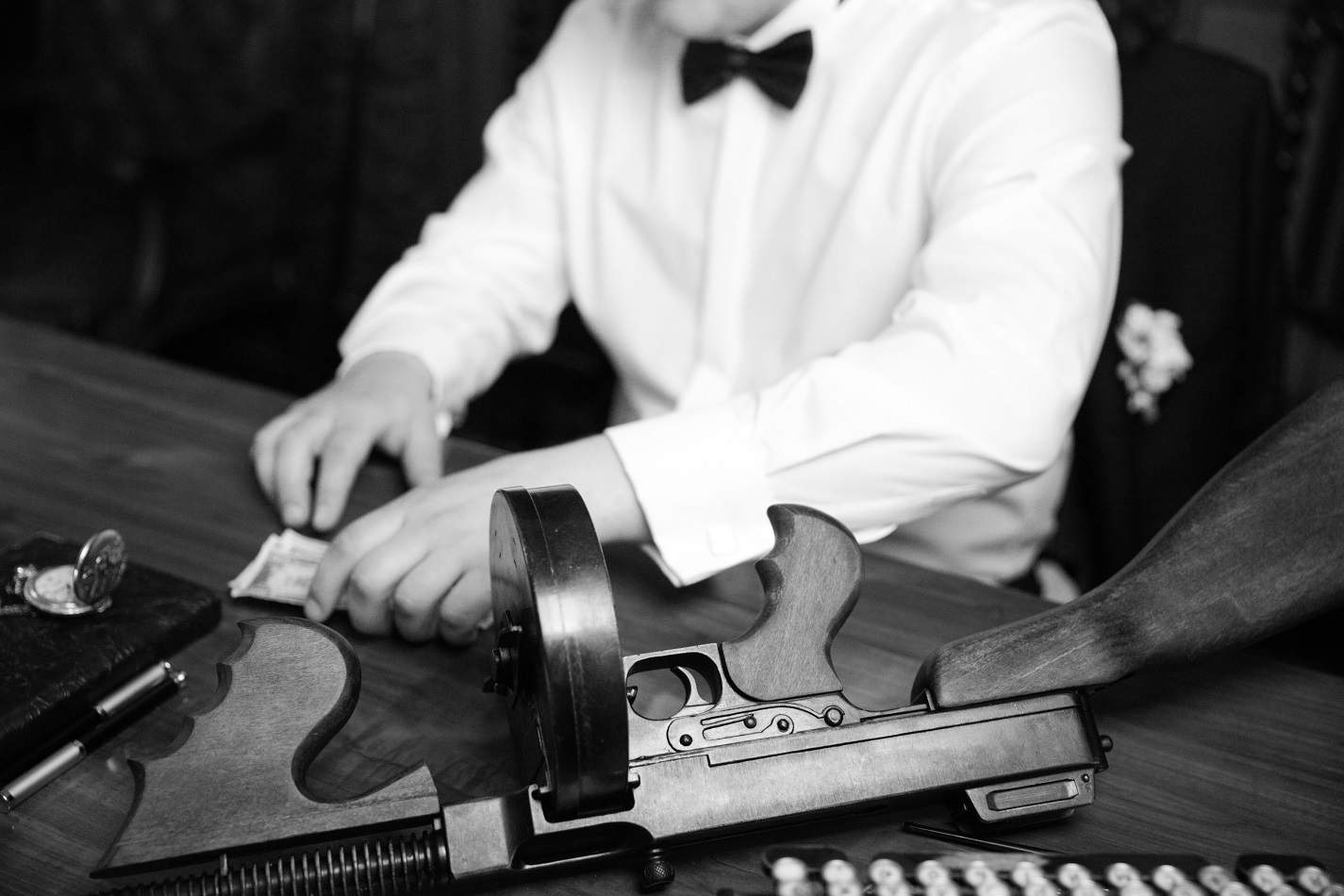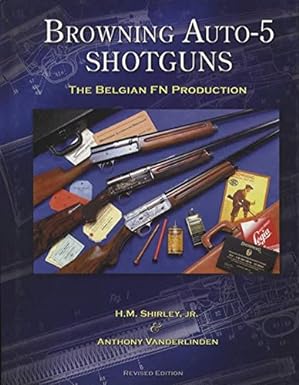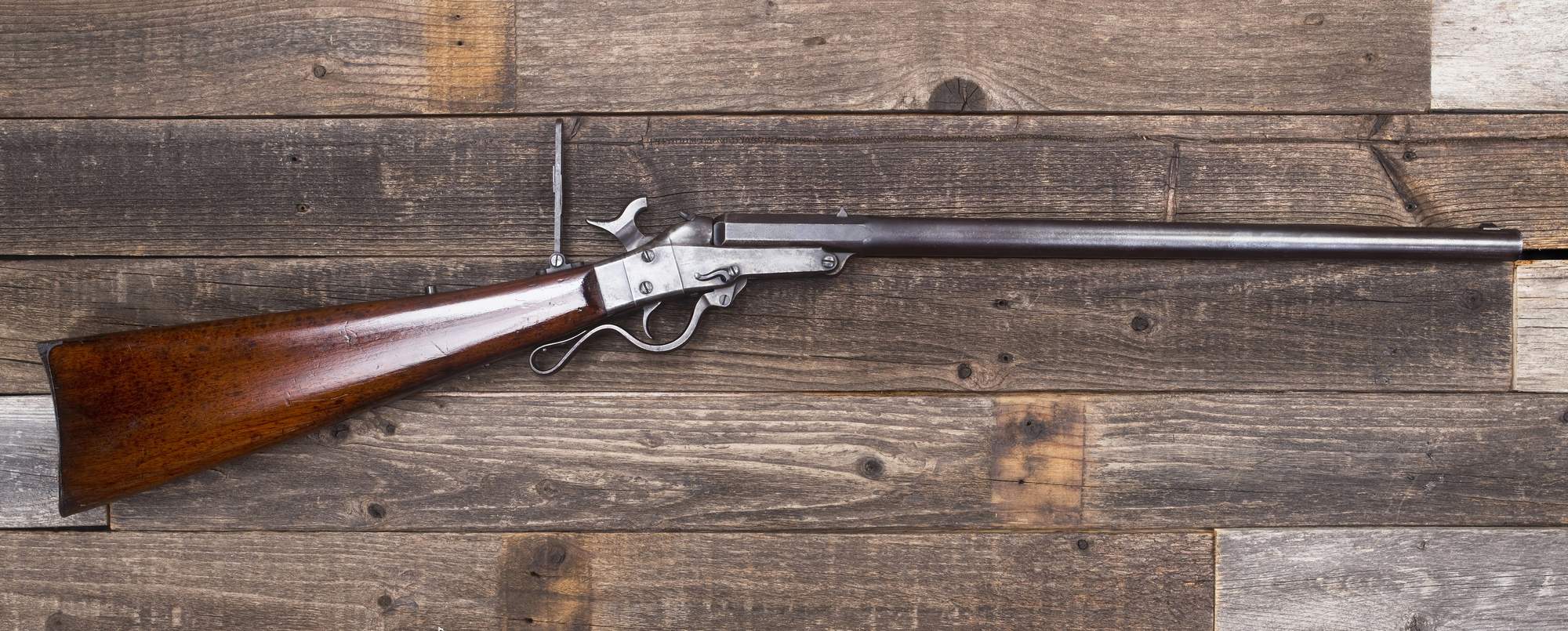Historic Gun Inventors & Their Prize Inventions
The history of firearms is full of stories about forward-thinking individuals who pushed the boundaries of the prevailing, conventional thinking of their times. The greatest inventions in the history of guns were innovated by people who looked to the technology available to them, and then pushed that technology further to meet the desires and needs of the time, especially during important epochs in history marked by military conflict. Here is a brief look at a handful of the most historic gun inventors and their prize inventions.
The Puckle gun, invented by an Englishman named James Puckle in 1718, was one of the first machine guns ever made. Its firing capacity of 9 rounds per minute made it one of the most innovative designs for its time. The tripod-mounted Puckle Gun featured a single-barrel cylinder that measured three feet in length, with 11 charges and a standard fire rate of 60 shots in seven minutes. The basic design was functional both for square and round bullets regardless of intended use. In spite of the fact that there was nearly a century in between the invention of the Puckle gun and the Gatling gun, the two nonetheless share a variety of features in common. Despite its forward-thinking and advanced design, the Puckle Gun has perhaps not received the degree of appreciation it might have over the ensuing centuries.

The Gatling gun, however, went on to become one of the most important firearms used in the American Civil War. It was invented and patented by Doctor Richard Jordan Gatling in 1862. Like the Puckle gun, it was a design that reached far beyond the standard bearers of its time both in terms of its innovation and effectiveness. The Gatling gun featured multiple barrels revolving around a central axis and an innovative cooling system between fired shots. The accuracy of the gun was one of its primary advantages, as was its ingenious mechanism designed to prevent unintentional firing of the charge. The Gatling gun was not only used by Americans but also by the British Army, who were intrigued by its capabilities when it was presented by Gatling himself in 1865. The first-model Gatling guns contained paper cartridges, but in 1866, technological advances saw the advent of metallic cartridges.
Technology continued to drive the development of new firearms that met the need for more powerful and mobile guns. Machine guns and then new generations of rifles began to take centerstage in a developing and increasingly competitive marketplace.
Hiram Maxim is one of the most highly regarded inventors of firearms because of his contribution as the inventor of the first portable machine gun. Maxim invented the gun that would subsequently bear his name, the Maxim gun. He presented it to the Royal British Army in 1885, who then adopted and distributed it in great numbers shortly thereafter. The British were especially attracted by the recoil-operated mechanism and the unprecedented rate of fire of 500 rounds per minute. Apart from being extensively used by the United States and Great Britain, the Maxim gun was also put to widespread use by other countries including Germany, Austria, Italy and Switzerland.
Arthur Savage was another primary gun inventor and manufacturer of the 19th century.
He opened Savage Arms Company in 1894 in New York and introduced the first hammerless, lever-action rifles, which immediately garnered the attention of public and private sector parties all over the country. Savage Arms Company became famous for producing a lever-action rifle that had a steel receiver and an innovative rotary magazine. Critically, it was an affordable firearm at the same time, even though it boasted an innovative design and desirable features. Over time, Savage Arms would manufacture powerful rifles, pistols and provide ammunition to the U.S. Army in times of war and military conflict.

The history of American firearms would not be what it is today without John Marlin. He is most widely known for the forward-looking designs he contributed in 1891 and 1893. Marlin commands a place in history amongst the great gun inventors because he designed some of the greatest shoulder weapons ever manufactured. The tradition carries on, as Marlin Firearms are still produced in great numbers to this day. Although their reputation in the gun manufacturing industry is secure, they continue to innovate, as is evidenced in their recent designs for bolt-action, rim-fire rifles.
Robert Parker Parrott was born in 1804 in New Hampshire and remains one of the greatest American inventors of military firearms. Graduating from the American Military Academy, he occupied a post for the artillery as lieutenant. After resigning from the army, he focused on working for a foundry in New York and began to focus on his passions. In 1860, the Parrott rifle was introduced to the world- an innovative rifle for its time, once manufactured in several sizes. Robert Parrott wanted to ensure that his rifle would be received favorably and this drove his decision, in large part, to also invent the 300-lb model, with a projectile weighing almost 140 kg. Parrott rifles were widely employed during the American Civil War, both by the Union and Confederate armies.
Many of the most famous rifles in the annuls of firearms history take their name from their inventors. One such example is Eliphalet Remington, born in 1793. He aspired to loftier heights than his blacksmith existence, and when he was only 23 years old, invented an innovative sporting rifle, whose barrel he had fashioned on his own. The gun was well-received and soon enjoyed mass production. It didn’t take long for Remington to become a name widely associated with sporting rifles. Realizing the increased demand for sporting firearms, Remington began to produce not only rifles but also shotguns, revolvers and ammunition. As their production of a wide variety of items for recreational and sporting use increased, so too did their production of firearms for the military during wartime. Remington steadily received orders not only from the United States, but also from a number of European countries, including France and Britain throughout World War I and in ensuing conflicts.
Oliver Fisher Winchester is notable as a historic gun inventor who also happened to be a politician. The Winchester Repeating Rifle, whose original design was inspired by the Volcanic Rifle of Smith and Wesson, represents one of the most significant firearm inventions in history. Along with Benjamin Tyler Henry, Oliver Fisher Winchester improved upon the Volcanic Rifle and equipped the Winchester to be more suitable for widespread adoption. He also designed rim-fire cartridges that ultimately led to the patenting of the famous Henry Repeating Rifle. Winchester went on to produce a wide selection of other firearms, including double-barreled shotguns and bolt-action rifles.
Horace Smith and Daniel Wesson, inventors of the original Volcanic Rifle, are two names that are synonymous with firearms the world-over. These were two entrepreneurial men forged a partnership in 1852, intending to produce a lever-action pistol called the Volcanic Rifle. However, the rifle was not received as well as they had originally expected and they were soon forced to sell to their intellectual property to a better-positioned Oliver Winchester. The two men, buoyed by the knowledge that their designs were in fact what the market wanted, reunited in 1856, and proceeded to make their own individual mark on the gun design and manufacturing world, especially during the American Civil War. Along with firearms, they also manufactured ammunition, including the renowned 22 rifle, the 32 Smith & Wesson, the 357 Smith & Wesson Magnum and the 44 Remington Magnum.

